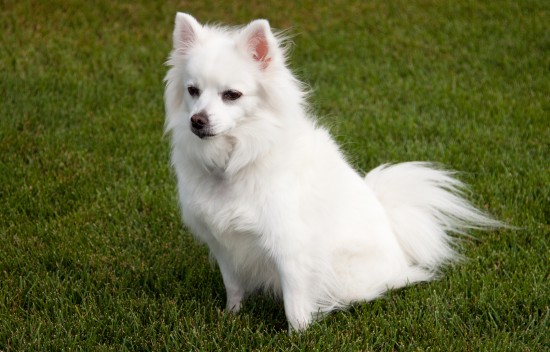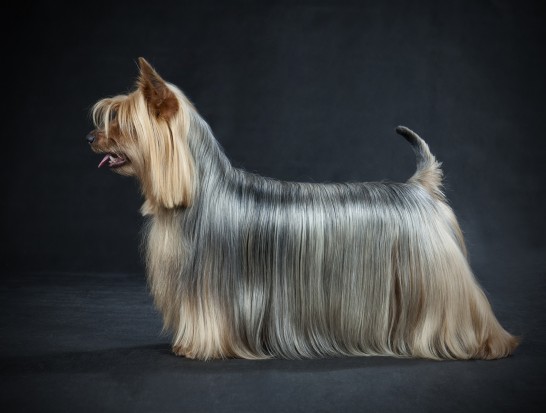
“Cat scratching is a natural form of self-expression for felines that satisfies multiple needs associated with health and well-being. Scratching provides a natural manicure that strips the outer sheath or layer of the claw for hygienic purposes; allows stretching of the muscles, ligaments, and tendons for health and vitality; provides an outlet for responding to stress and crisis; and provides an enjoyable species-specific activity associated with excitement and play.”
This list was created to assist those who need solutions to cat scratching behavior and alternatives to declawing. Our goal is to create an exhaustive list so that people have the information necessary to understand natural healthy cat scratch behavior and practice while feeling empowered and adept at redirecting it to designated scratch surfaces.
NOTE: This list is long and varied in recognition of cat's individual purrsonalities, pawticular purreferences, and unique cat scratch expressions and impressions. Another words, some of these solutions will work with your cat while others will not. The purrpose is to offer sufficient pawsibilities that can be chosen and implemented based on your specific needs, the needs of your cat, and the needs of your interspecies household. Although we're wanting to collect 100 pawsibilities, we want people to understand that we're not suggesting that you use all of these with one cat. We do suggest that people observe their feline family members behavior for cues and clues in order to determine the solutions that will be most effective and functional in their particular cohabitation situation. Although it won't be necessary for a person to employ every option, solution, or intervention mentioned in the list...more pawsibilities ensure that some solution can be found for any cat, any purrson, and any household.
1. Have you created a space or area in the home where your feline family member can feel safe, secure, and comfortable? A cat at ease is less likely to engage in what appears to be random, indiscriminate scratching.
2. Have you provided a scratch surface with a texture that your feline prefers or multi-textured options? (fabric; wood; window screen; upholstery; rugs/carpet; mattress ticking; sisal, basket weave; cardboard; cork)
3. Have you provided a scratch surface that provides a variety of scratch directions? (horizontal, vertical, angled)
4. Have you provided a scratch surface that remains stationary and stable in response to your feline family member’s scratching behavior?
5. Does your scratching post or scratching surface provide a 28 inch to 36 inch vertical height so your cat can reach, pull, and get a full stretch of the body?
6. Have you placed the scratch surface in an area where you’ve observed the scratching behavior? (where sleeping quarters are located; where food & water bowls are located; at entrances/exits/doorways/window sills; near home furnishings; common living areas shared by the rest of the family)
7. Have you placed several scratching posts/surfaces in multiple areas around the home so your cat has opportunities to land the right scratch in the right place at the right time?
8. Have you provided enough scratch outlets to accommodate a multi-cat household?
9. Have you placed scratching posts/surfaces in communal areas where the family spends the majority of their time? (Your feline family member will want to be near you, not stuck in a corner away from all the action)
10. Have you considered buying a perch-scratching surface combination like the CatAWhack Unit? Cats like to look out over the area that they share with you and the rest of the family; a perch provides a great platform for spying interesting things, staying entertained, and seeing "eye-to-eye" with the rest of the family... and like any member of the family who wants to communicate or share their discoveries, they need a way to communicate it to you…that’s where the scratch surface (aka: writing pad) comes into play providing a conveniently located means of expression.
11. Does scratch behavior happen before, during, or after exposure to particular experiences or activities? (eating, drinking, sleeping, playing, looking out the window, spending time on the screened in porch, visiting the vet, engaging with other residents in the home)
12. Does the scratch behavior occur at pawticular times of the day (dawn, dusk, middle of the night); after specific activities (waking from sleep, eating, playing); or after seeing other felines, birds, squirrels or interacting with the family dog or other felines (within the home, seen through windows, scent detection through window screens or under doors)?
13. Have you integrated the meeting of multiple daily needs with the placement of scratch surfaces? For example, creating a space where feeding, drinking, sleeping, playing, exercising, stretching, and scratching occurs. Designated purrsonalized spaces that fulfill multiple needs associated with feline health, well-being, and activities of daily living make natural recurrent scent placement a reinforcer for return visits and repeat scratch purrformances.
14. Have you rewarded scratching behavior placed on designated “claws on” surfaces with treats, catnip, affection, pawsitive praise, and/or play time?
15. Have you tried placing your cat on or near the scratch surface while you pet her? This often inspires “kneading” movements with the paws that retract and extend the claws into and out of the scratch surface leading to pleasurable sensations and a desire to return and repeat.
16. Have you used rewards or pawsitive reinforcement that YOUR cat is responsive to? (treats; interactive play time; solitary play time with a treat ball; praise; kitty massage; catnip; access to an area, room, closet, basement, etc. that is not always accessible)
17. Have you enticed your feline family member with interactive play time around the scratching post/designated scratching surface or with sights, sounds, scents, tastes that encourage exploration around the unit? (dangle toys; chase toys; catnip; hidden treats; pre-recorded “prey” sounds that initiate at timed intervals; games of chase, tag, or hide-n-seek)
18. Have you made efforts to change out positive rewards and reinforcers to make it more interesting for your cat? (For example, adding a cardboard box or some other addition that would encourage exploration and curiosity in the area where the scratching post is placed)
19. Have you placed automatic treat dispensers around the scratching post/surface? (Make homemade treat dispensers or work-to-eat toys by cutting small holes in a brown paper bag, small cardboard box, or toilet paper roll that has the ends folded up; Try the Amazing Treat Machine Rollers)
20. Have you been consistent in your efforts to redirect, reward and reinforce scratching behavior on designated “claws on” surfaces?
21. Have you provided your cat with at least 14 days to change their scratch practice to approved surfaces? (After all, it takes at least 14 days to break or change a habit)
22. Have you made old scratching haunts or “claws off” surfaces unappealing to your feline family member? (Covered with double sided tape or furniture protectors such as: Sticky Paws Furniture Strips; Sticky Paws on a Roll; Used safe scents or non-toxic repellents at the site of unwanted scratching such as orange rinds, natural citrus, lemon, or orange sprays, Pet Organics No Scratch!, bitter apple sprays or repellents; used Motion-Activated Deterrents which is a motion detector that senses your cat and releases a blast of air from a compressed aerosol can when the cat gets near old scratching haunts; Placed aluminum cans filled with something noisy like coins, pebbles, or dry beans (Remember to tape over the opening with a natural latex tape) teetering on the edge of unwanted scratch areas like the arm of a chair. The scratch action will cause the can to fall creating a noise that will deter a repeat purrformance.)
23. Have you used a pet odor remover such as Nature's Miracle Just for Cats Orange Oxy Power Stain & Odor Remover on old scratching haunts before covering with the above? (Scent glands in the paw pads accompany scratch placement. Remove the scent before covering so that when a new scratch practice is established and it’s time to uncover, they won’t have a desire to return)
24. Have you considered using bananas as a scratch deterrent? Believe it or not, it has been reported that some cats do not like the smell of bananas. You can place a single banana or a bunch near the "claws-off" area or surface. Other options include natural banana extract or banana powder. NOTE: All cats are not the same and have different aversions to smells.
25. Have you placed a smooth or satin type throw blanket over the furniture where the scratch is occurring? This texture combined with the blankets tendency to slip, slide and move will make it difficult for your feline family member to get a good "grab" and will therefor be less appealing than other surfaces or textures. NOTE: Although you want the blanket to move somewhat in response to scratch attempts, it will tend to adhere to the upholstery so it stays in place and doesn't fall to the ground. If you have a leather or vinyl piece of furniture, tuck one end of the blanket into the cushions to anchor it.
26. Have you positioned the CatAWhack Unit/ scratch surface next to former scratching haunts (aka: couch, kitchen table, doorway or window frames, carpets or rugs, draperies, shower curtain) to encourage transfer of the scratch practice from “claws-off” surfaces to “claws-on”?
27. Have you gradually moved the CatAWhack Unit or another scratch surface away from former scratching haunts over the course of a 14 day period in order to establish your feline’s scratch practice on "claws-on" surfaces outside of regular foot traffic paths throughout the home or at the periphery of a room instead of the center?
28. If you have kittens, are you getting them used to having their paws handled so they will be more comfortable with nail trimming?
29. Are you trimming your cat’s claws at least once a month or having the veterinarian do it for you?
30. Are you avoiding trimming your cat's claws because you don't know how to do it or are afraid of cutting into the quick of the nail? If so, here are a few resources to help: How to Trim Your Cat's Claws; Trimming Your Cat's Claws Video with Cat Henstridge, the PetStreet Vet
31. If you're having difficulty trimming your cat’s claws, have you tried the Klaw Kontrol Bag which restricts movement for the accomplishment of essential grooming?
32. If your feline family member becomes anxious during nail trim sessions, have you tried a Cat Muzzle that will cover the eyes, minimize reactions to the environment, and produce a sense of calm? NOTE: A properly fitting kitty muzzle, as used by vet techs and groomers, has been found to be a safe and humane way to minimize or alleviate your cat's stress during grooming and some types of medical intervention and treatment. If you decide to use this option, please be sure the muzzle fits properly so that your kitty's nose is through the front opening before proceeding; if you can see the nose clearly, then kitty can breathe freely! Just as with anything else, not all cats will react to one the same way, and some will do better without one.
IMPORTANT: before attempting this option, provide your feline family member with some time to get familiar with the muzzle...put it on the floor, allow her to brush up against it, introduce gradually over a few days.
33. Have you tried music specifically designed for the acute hearing sensitivities of your feline to inspire a sense of calm? Pet Acoustics have discovered that felines prefer long sustained tones and harmonies at a moderate to low volume to maintain their feline state of relaxation. Pet Acoustics music can help create an environment that minimizes stress and excessive scratch activity in response to a variety of things in the environment including grooming (nail trim sessions), separation anxiety, thunderstorms, car travel, or veterinary visits.
34. Have you tried Soft Claws adhesive nail caps that cover the claw for a 4 to 6 week period? Here's a video demonstration to help: How to Apply Soft Paws and Soft Claws Nail Caps with Veterinarian Dr. Christianne Schelling and Charlie the Cat
35. Have you tried Feliway Comfort Zone Plug-In, a natural substance, odorless to humans, that mimics a cat's facial pheromones to reduce overactive scratching in response to stressful environments?
36. Have you tried Clicker Training where you pair a clicking sound with the desired behavior and reward delivery? Captivate their attention by clicking when they move in the direction of the desired area and engage in scratch behavior. Immediately follow the sound of the click with positive reinforcement until a new behavior occurs on a regular basis.
37. Have you provided your feline family member with at least 15 minutes of playtime per day? (boredom can lead to more scratching behavior)
38. Have you taken the time to observe your cat for clues and cues on how to inspire their cooperation? What curls your cat's whiskers, produces a tail swish, gets that purr motor runnin' or inspires a meow?
39. Have you provided a stimulating environment that will keep your cat entertained? For example, have you opened curtains, blinds, and window shades; provided a perch high enough to see outside windows; and placed scratch outlets within close proximity?
40. If you live in a basement apartment with few windows, have you considered playing DVD's that feature footage of outdoor critters like birds, squirrels, rabbits, crickets, or mice to provide visual stimuli and environmental enrichment? Have you placed a scratch surface in the vicinity?
41. Have you considered introducing enticing sounds or recordings around the designated scratch surface or area? The crinkle sound of a brown paper bag; The scratching sound that a fingernail makes on a textured surface; The sound of an index finger thumping underneath a blanket; Insect, rodent, bird, bat, frog sound clips produced by an electronic device that automatically plays at set intervals or begins in response to movement (You can get great sound clips here: Animal Acoustic Communication)
42. These sounds will stimulate predatory preparatory responses that encourage scratching in the area of the sound and reinforce scratching activity on and around the designated scratch surfaces where the sound originates. You can also enhance the effect by placing hidden treats and toys in the vicinity of the sound that have a similar appearance, texture, and quality of the prey associated with the sound.
43. Have you considered placing cat puzzles or small cubby holes with hidden treats near the scratch surface or having a treat dispenser nearby to dispense treats?
44. Another great lure is to use a light source at night to project moving shadows onto a floor, wall, or ceiling that is located near designated scratch areas to encourage the use of claws. Shadows can be created by placing a light source behind a moving, rotating, or rocking object and adjusting the intensity and positioning of the light source to achieve different levels and patterns of shadow.
45. Consider using Calvin Klein Obsession for Men Cologne. It has been found to attract and illicit responses in once wild big cats now in captivity. Check out the video Big Cats Wild for Calvin Klein Cologne. A squirt or two on or around the scratch surface may be just what is needed to grab the attention of your feline.
46. Have you considered purchasing one of many iPhone or iPad apps for cats to provide your feline family member with some play time in the vicinity of a scratch surface?
47. Have you consulted with an animal behaviorist that specializes in cat behavior, a pro-claw rescue organization, or a pro-claw veterinarian?
48. Have you used an Internet Search Engine like Google or Yahoo to discover more about feline behavior and scratch practice?
49. Here are a few websites that may provide information, resources, tools, and products that can help: Cattress Mattress; Expert Cat Behaviorist Jackson Galaxy; Paws Need Claws Campaign; Veterinarian Dr. Christianne Schelling; Holistic veterinarian and author Dr. Jean Hovfe
50. If your cat experiences a cat scratch relapse and begins scratching "claws-off" areas, explore what may have triggered the behavior: Is there anything new or different in the environment? Is there a new addition to the family or a recent absence of a family member? Are there changes in the external environment that are contributing to changes inside such as construction projects in the area, a neighbor with an affinity for loud music, or any loud noises that may have startled or spooked your feline family member when he was occupying his designated space or practicing his scratch behavior? Is kitten bored? Are there any new smells left over from a home improvement project, guests entering the home who may be carrying the scent of their feline family members that would only be detectable to the sensitive nostrils of your feline, or any other smell that could trigger a scratch reaction or need to place scent?
51. If you're not sure what is contributing to your cat's abrupt change in scratch practice, do some detective work. Consider an appointment with your veterinarian to see if there is a physical or medical reason; Invest in a Motion Detection Camera to check-in with your feline family member at anytime throughout the day by wireless remote video viewing which could provide some clues of what happens when you're not there.
52. If you’re using a CatAWhack Unit or other cat furniture that incorporates a scratch panel, consider moving it occasionally (every 4-6 months) to another desirable location such as a new window view to keep Kitten engaged, curious, and stimulated OR reconfigure the CatAWhack Unit by moving the scratch panel, bed, or leaf toy OR introduce a new component or accessory such as a box, a blanket over half of the unit, crinkle tube, or a new toy.
Remember, don’t take the scratch purrsonally…put yourself in their paws and simply discover ways to inspire claws to designated surfaces.
Give your cats a scratchin’ chance! They are simply attempting to find their way; determine their area; discover where they belong; allocate space; map out a perimeter; define boundaries; let other home inhabitants know they’re there; communicate; practice activities of self-care that contribute to health, longevity and well-being; and establish an identity within the family unit.
Help us add to the list! Together we can reach 100 interventions and solutions.
So what do you say? Power to the Paw: Claws & All! We can do it!
 More About The American Eskimo Dog
More About The Am
More About The American Eskimo Dog
More About The Am
 Responsible Factors For Shih Tzu Allergies
Responsible Factors For Shih Tzu Allergies
Shi
Responsible Factors For Shih Tzu Allergies
Responsible Factors For Shih Tzu Allergies
Shi
 Is An Australian Silky Terrier The Right Choice Of Dog For You?
Is An Australian
Is An Australian Silky Terrier The Right Choice Of Dog For You?
Is An Australian
 Some Gorgeous Brindle Dog Breeds
Some Gorgeous Bri
Some Gorgeous Brindle Dog Breeds
Some Gorgeous Bri
 Rottweiler Hereditary Health And Health Testing
Rottweiler Heredi
Rottweiler Hereditary Health And Health Testing
Rottweiler Heredi
Copyright © 2005-2016 Pet Information All Rights Reserved
Contact us: www162date@outlook.com